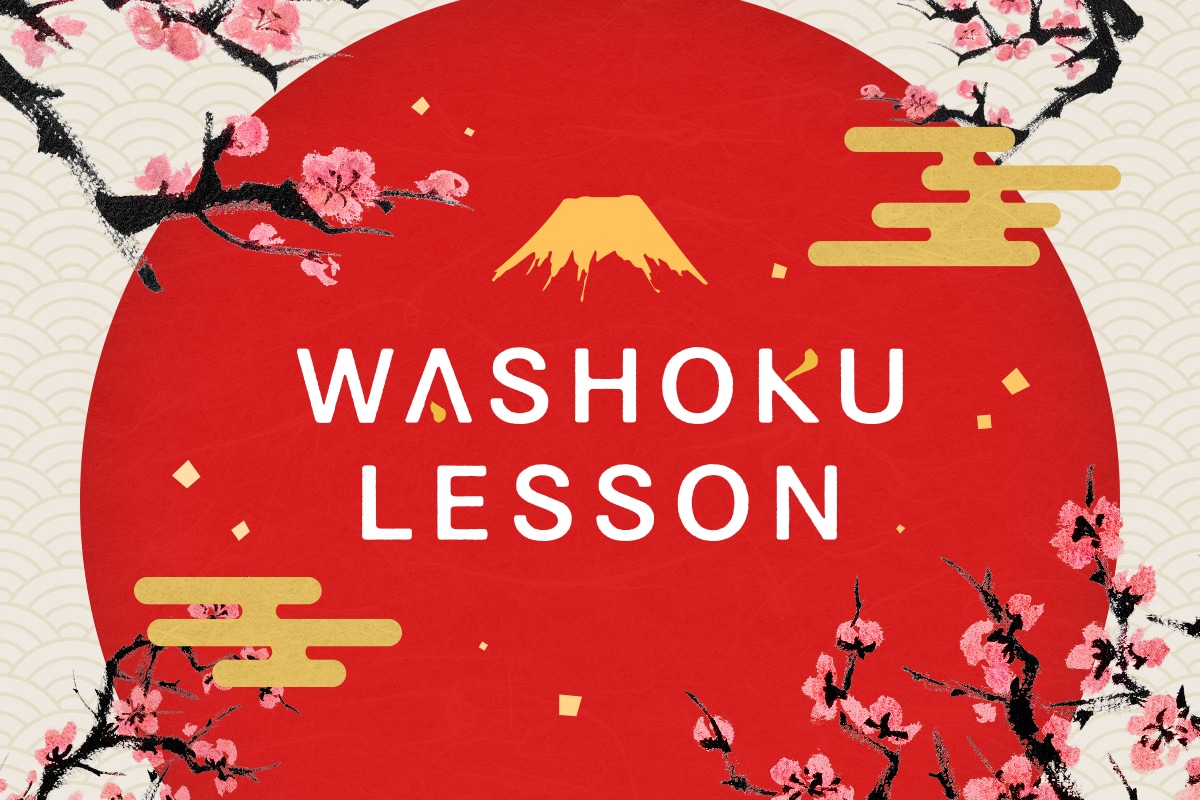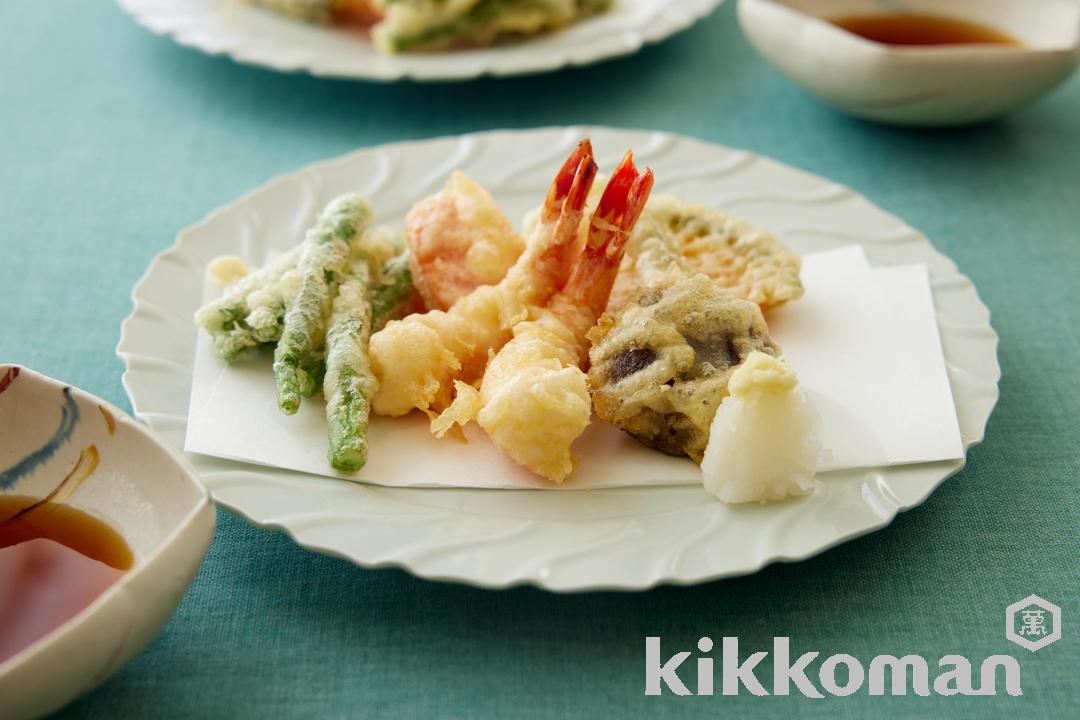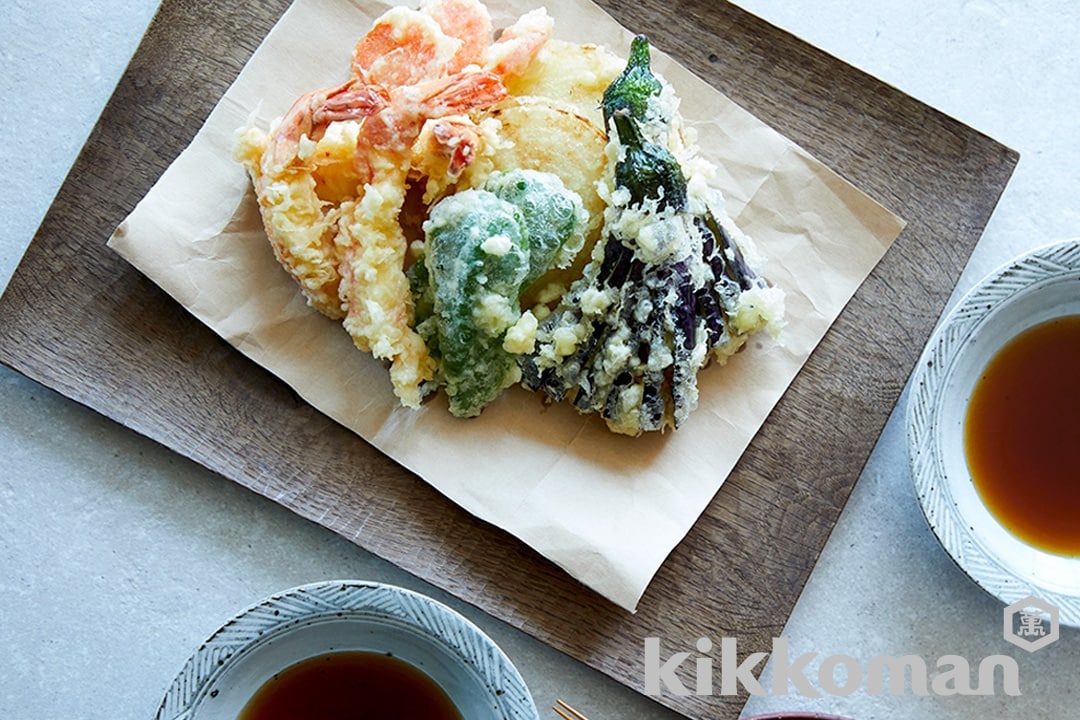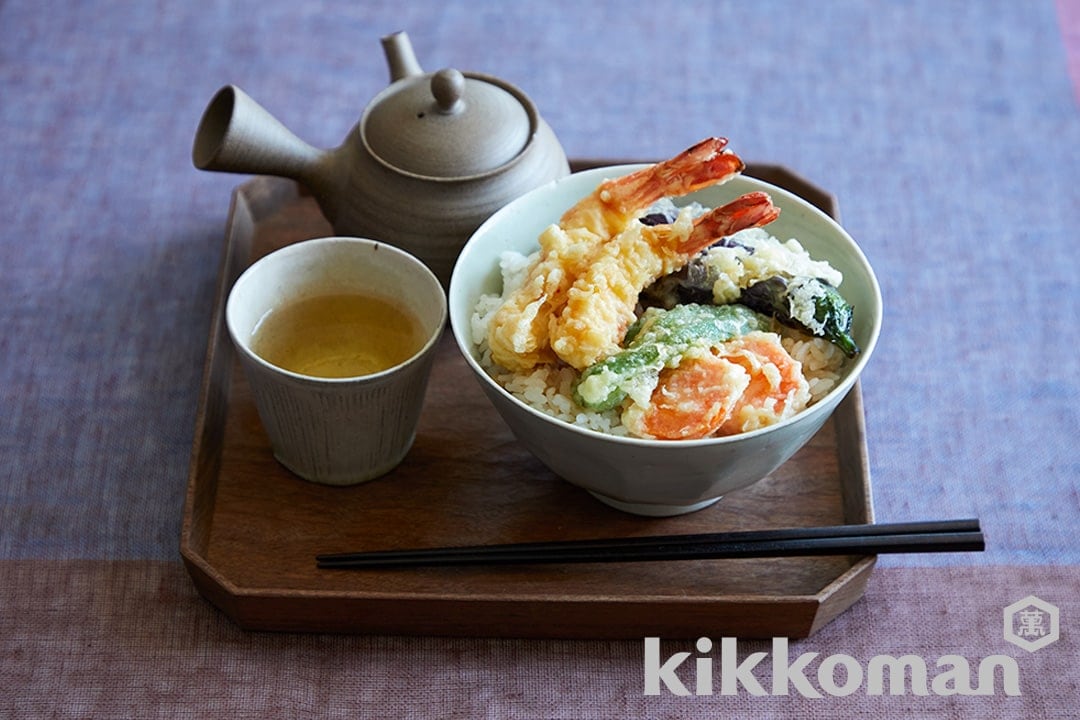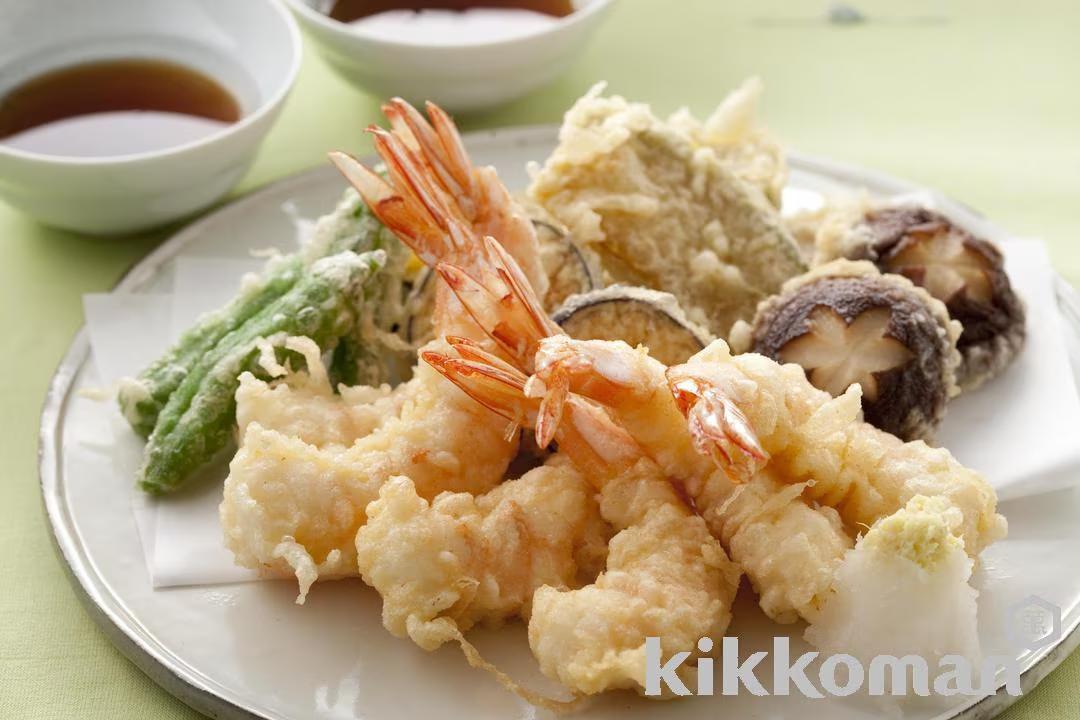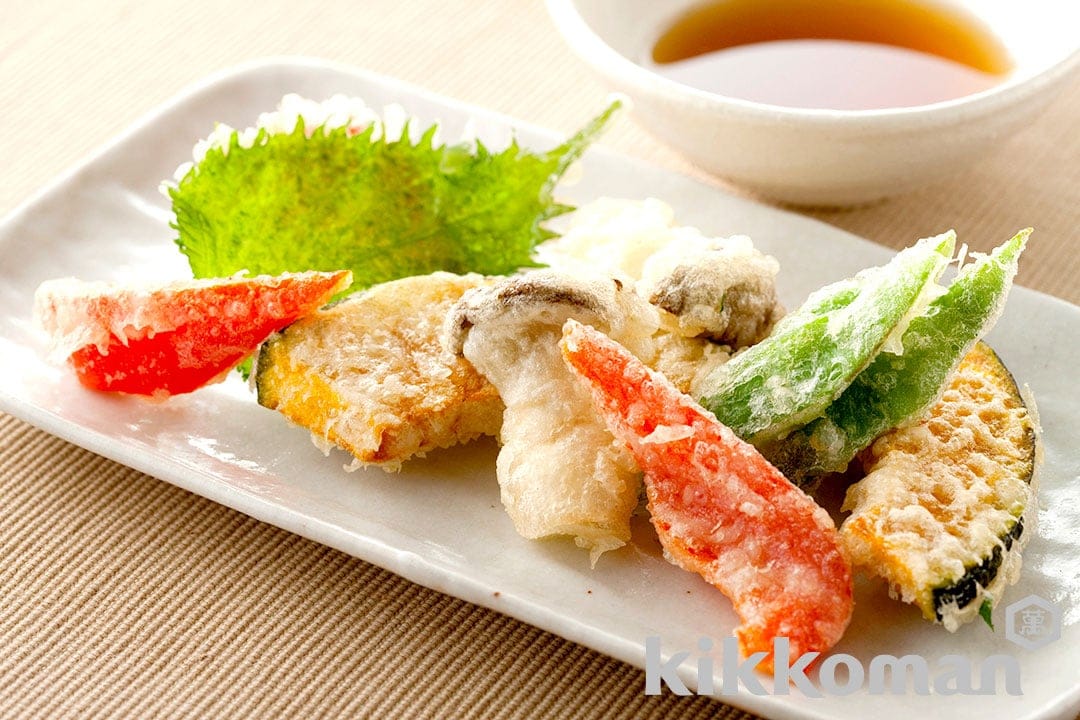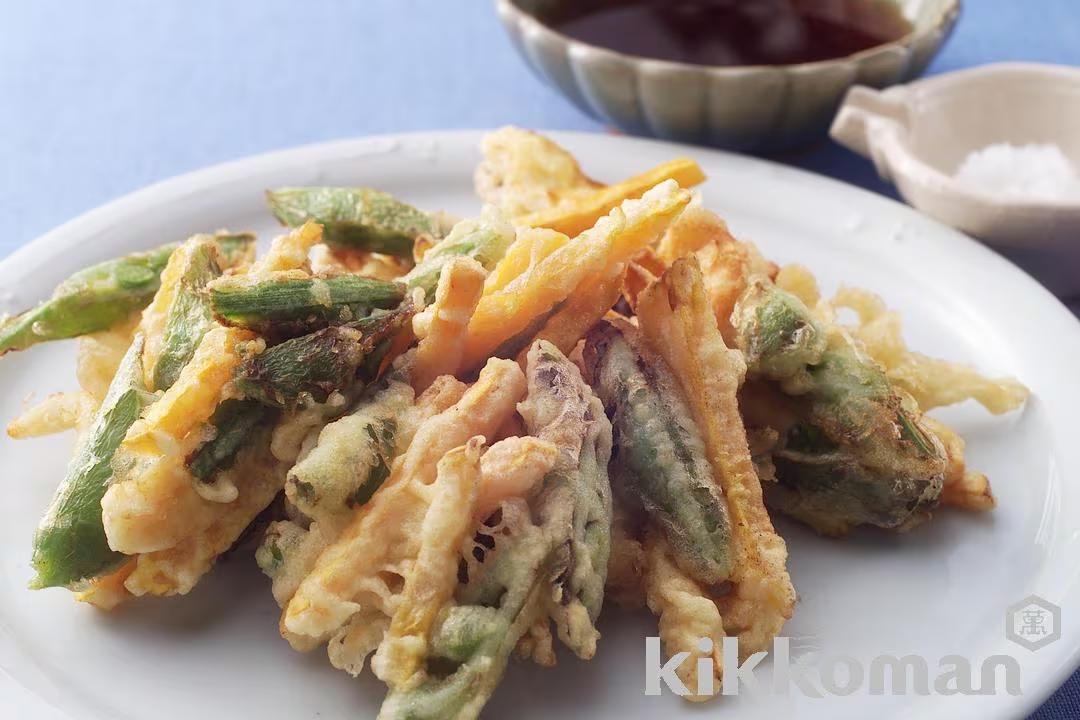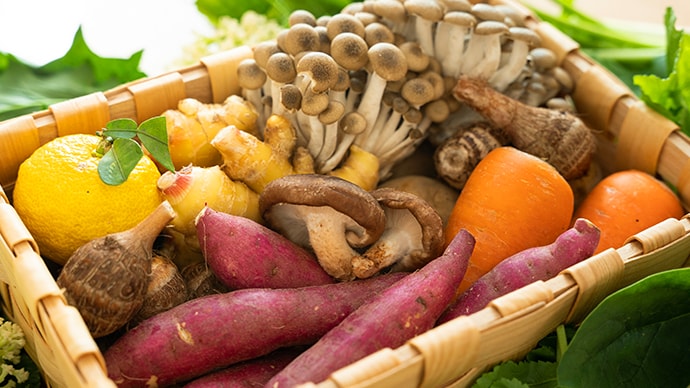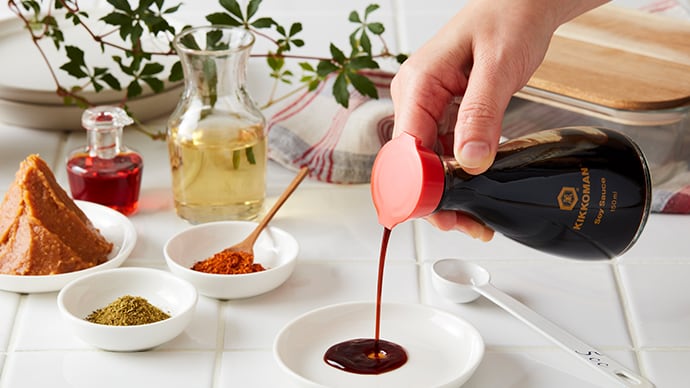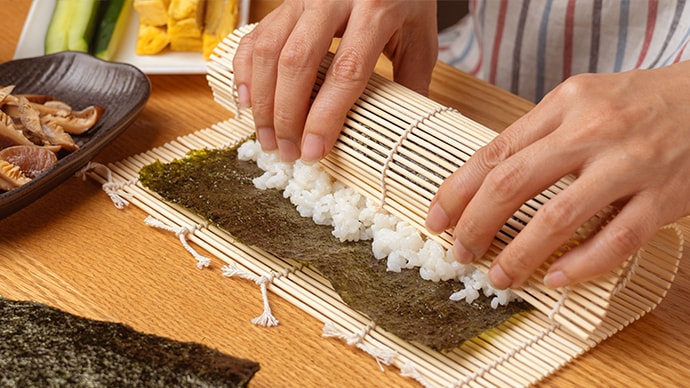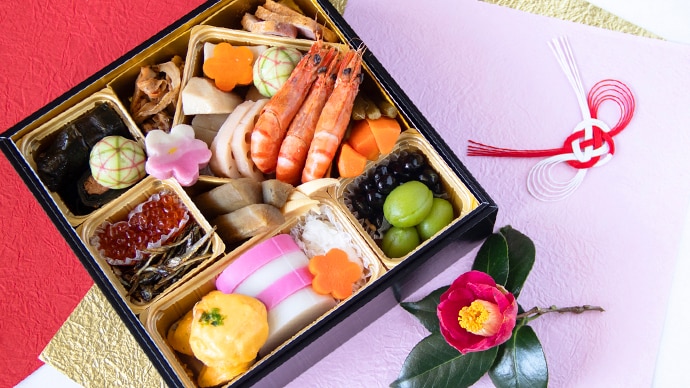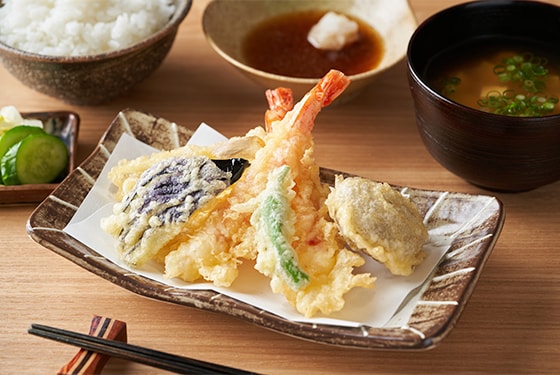
Fresh fish or vegetables, battered and fried — a prime example of Japanese fried foods
What is tempura?
Tempura (天ぷら in Japanese) is made by taking fresh fish or vegetables and battering them with a mixture of eggs, water, and wheat flour, then deep-frying them. Primarily eaten by dipping the pieces of tempura in tentsuyu sauce, a seasoning made with dashi (Japanese broth), soy sauce, and mirin. Tempura is also eaten with salt or lemon juice. Tempura is quite popular when eating out, whether it is tempura on warm cooked rice called tendon, tempura on soba (buckwheat noodles) called tempura soba, or even tempura udon which is udon noodles with tempura on top. Standard varieties of tempura include shrimp, squid, sillago fish, eggplant, kabocha ( Japanese pumpkin), and shiitake mushrooms. Dishes with only vegetable tempuras are called shojinage. Since tempura is a simple dish made with only a light amount of batter and then fried quickly, using fresh ingredients is considered extremely important.
History
The predecessor to tempura first appeared in Nagasaki during the early Momoyama period (1568-1600), brought over by Portugal. It is said that it used thicker batter and was more akin to a fritter back then. Sometime in the 17th century this cuisine made its way to Osaka, where it evolved into a dish called tsuke-age, more vegetable-based cuisine, fried in sesame oil. This then made its way to Edo during the An’ei era (1772-1781) of the Edo period where it spread as a street food popular among the commoners. Tempura is made largely the same as it was back during the Edo period, deep-frying seafood then skewering it and eating it with tentsuyu sauce. Tempura restaurants started popping up after this, and the modern light, crispness of tempura became the mainstream. Nowadays, tempura is popular on home menus in Japan, but there are also high-end tempura restaurants that will fry the tempura in front of you and place each one on a plate one at a time.
Trivia
Ensure you have properly removed the moisture of any seafood or vegetables you are going to deep-fry for tempura before dipping them in batter. Ingredients containing a lot of moisture will result in oil splatter when frying. Shrimp tails in particular have a lot of moisture, so ensure you cut off the tip of the tail and drain the water first.
Washoku Lesson
Washoku Lesson is special content offering detailed and easy-to-understand explanations, including tips for making classic Japanese dishes as well as the many ways of enjoying these, and introductions to special Japanese cooking utensils and annual events .
Related Recipes
30min
483kcal
600mg
25min
499kcal
600mg
20min
321kcal
600mg
15min
218kcal
512mg
20min
268kcal
800mg


